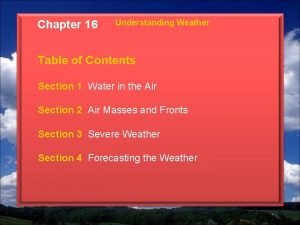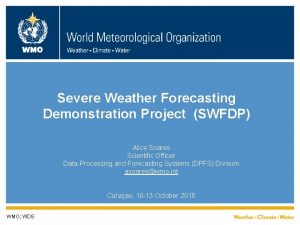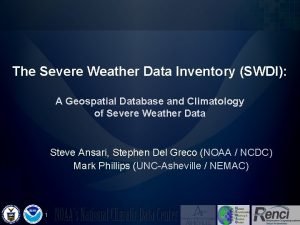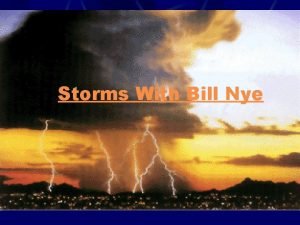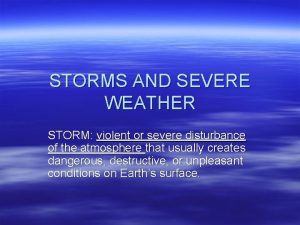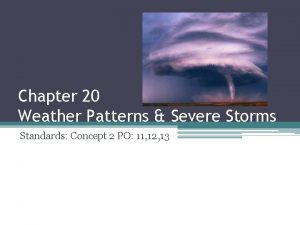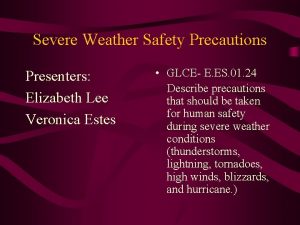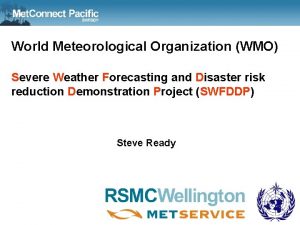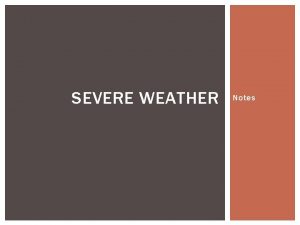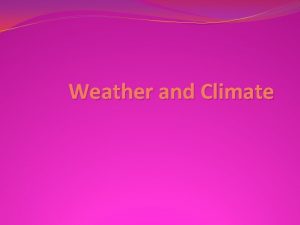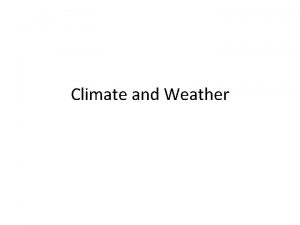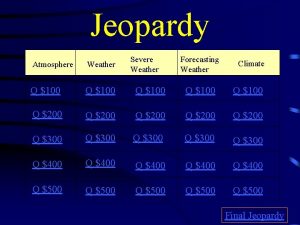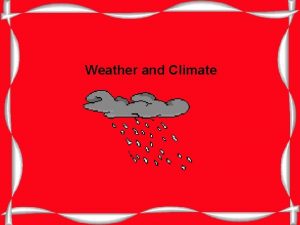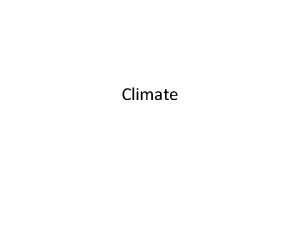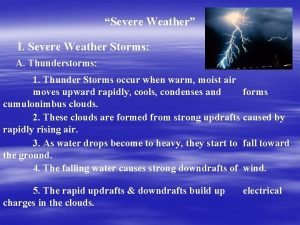Severe Weather Weather vs Climate is the condition









- Slides: 9

Severe Weather

Weather vs. Climate is the condition of the atmosphere at a certain time and place • Weather reports may not always be right, but are specific is the average weather conditions of an area over a long period of time. • Usually described in terms of temperature and precipitation

Thunderstorms - a usually brief, heavy storm that consists of rain, strong winds, lightning, and thunder • They can occur along and in other places as well • Two atmospheric conditions are required for thunderstorm: warm moist air near Earth’s surface and an unstable atmosphere – Unstable atmosphere = surrounding air colder than the rising air mass.

Thunderstorms cont. • The atmosphere is unstable where cold air is above and around warm wet air. This instability allows the air masses to move, which leads to the formation of clouds • When lightning strikes, energy is released. This energy is transferred to the air and causes the air to expand rapidly and send out sound waves is the sound that results from the rapid expansion of air along the lightning strike.

Tornadoes • Happen in only 1% of all thunderstorms is a destructive, rotating column of air that has very high wind speeds, is visible as a funnel-shaped cloud, and touches the ground • Produce most of Earth’s most powerful winds • Presence of dust and debris reason funnel cloud looks dark, causes most damage to buildings

Hurricanes is a large, rotating low-pressure system that forms over the warm waters of oceans near the equator • Happen summer or fall, when oceans have most heat energy • Form over the Atlantic Ocean, Caribbean Sea, and Gulf of Mexico • Similar storms are called cyclones or typhoons

Hurricanes • Hurricane starts as a low over warm waters of Atlantic, it gains energy from the warm humid air above the water • As is stays over the ocean, it continues to pick up energy which increases the speed of rotating air, increasing the wind speeds • When a wind speed reaches the storm is called a hurricane • Due to global wind patterns, hurricanes often strike islands in Caribbean sea or the eastern coast of the U. S. • When hurricanes reach land, it weakens without the energy from the ocean. When wind speeds decrease, the hurricane is called a tropical storm or depression – Atlantic hurricane season is from Apr. to Nov.

Eye of a Hurricane • A hurricane has a typical shape. • The eye of a hurricane is a place of very low pressure with no clouds above it. • In the eye, it is very calm and sunny. • The most violent winds in a hurricane form the wall of the hurricane’s eye.

Quick Check • A high speed, spinning cloud in shape of a funnel is _________ • What causes thunder___________ • A thunderstorm is most likely to occur when the weather is A. cool and dry B. Hot and dry C. Cool and humid D. Hot and humid
